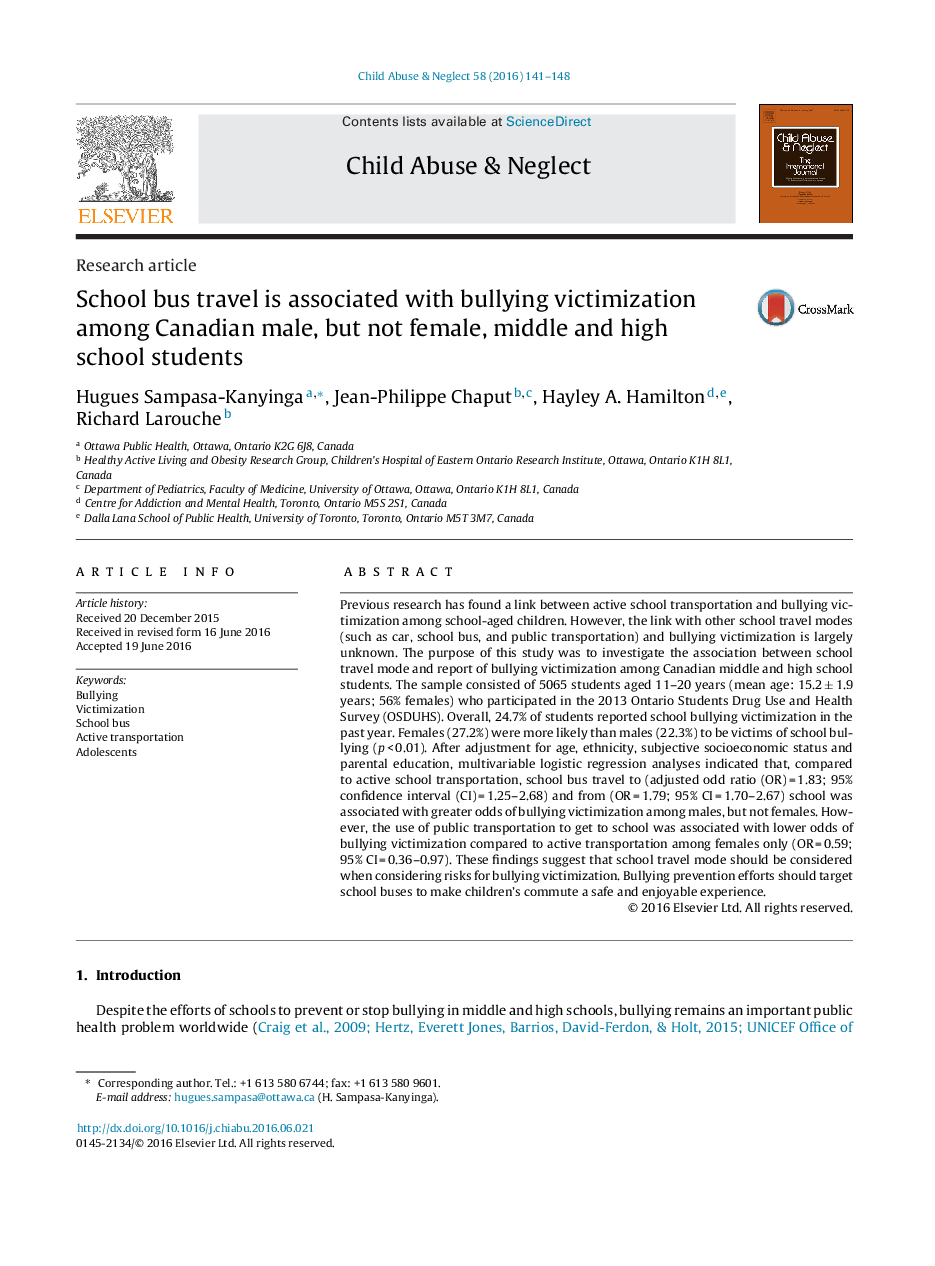| Article ID | Journal | Published Year | Pages | File Type |
|---|---|---|---|---|
| 6832272 | Child Abuse & Neglect | 2016 | 8 Pages |
Abstract
Previous research has found a link between active school transportation and bullying victimization among school-aged children. However, the link with other school travel modes (such as car, school bus, and public transportation) and bullying victimization is largely unknown. The purpose of this study was to investigate the association between school travel mode and report of bullying victimization among Canadian middle and high school students. The sample consisted of 5065 students aged 11-20 years (mean age: 15.2 ± 1.9 years; 56% females) who participated in the 2013 Ontario Students Drug Use and Health Survey (OSDUHS). Overall, 24.7% of students reported school bullying victimization in the past year. Females (27.2%) were more likely than males (22.3%) to be victims of school bullying (p < 0.01). After adjustment for age, ethnicity, subjective socioeconomic status and parental education, multivariable logistic regression analyses indicated that, compared to active school transportation, school bus travel to (adjusted odd ratio (OR) = 1.83; 95% confidence interval (CI) = 1.25-2.68) and from (OR = 1.79; 95% CI = 1.70-2.67) school was associated with greater odds of bullying victimization among males, but not females. However, the use of public transportation to get to school was associated with lower odds of bullying victimization compared to active transportation among females only (OR = 0.59; 95% CI = 0.36-0.97). These findings suggest that school travel mode should be considered when considering risks for bullying victimization. Bullying prevention efforts should target school buses to make children's commute a safe and enjoyable experience.
Related Topics
Health Sciences
Medicine and Dentistry
Perinatology, Pediatrics and Child Health
Authors
Hugues Sampasa-Kanyinga, Jean-Philippe Chaput, Hayley A. Hamilton, Richard Larouche,
